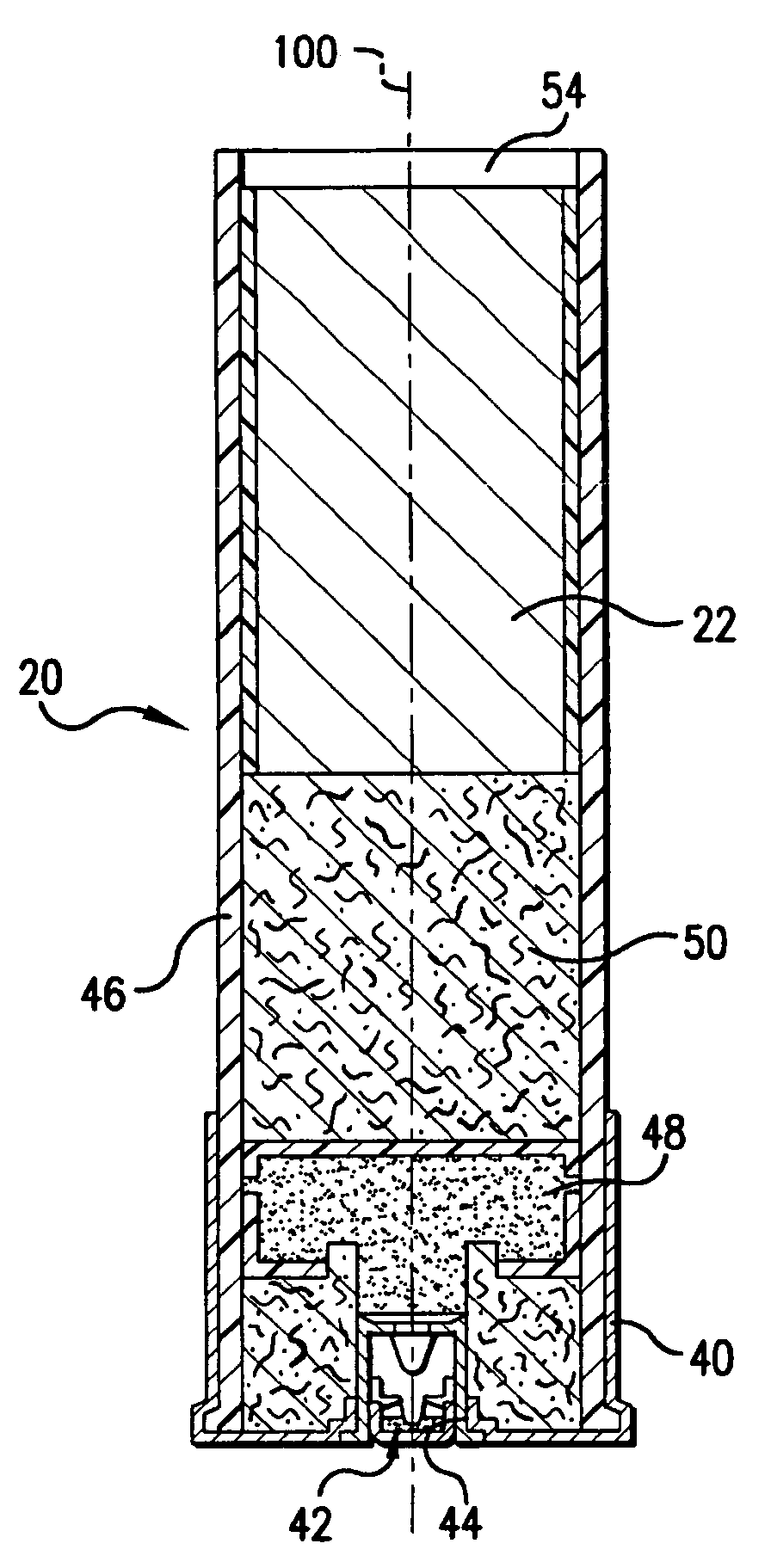Slug for industrial ballistic tool
a technology of industrial ballistic tools and slugs, which is applied in the direction of weapons, lighting and heating apparatus, furniture, etc., can solve the problems of inability to safely or efficiently try manual removal of plugs, inability to stop the kiln to remove obstructions economically, and inability to remove plugs in time, so as to facilitate the provision, reduce or eliminate the introduction of toxic pollutants, and facilitate the provision
- Summary
- Abstract
- Description
- Claims
- Application Information
AI Technical Summary
Benefits of technology
Problems solved by technology
Method used
Image
Examples
examples
[0045]Table 1 shows manufacturing parameters for a series of exemplary slugs.
[0046]
TABLE 1Density (g / cc)SinteringMixture (wt. %)Sint.Temp.TimeEx.Fe*FeWLub.**Green (avg.)(avg.)(° C.)(min.)199.2 M0.00.8 A6.015.9865015.0299.2 A0.00.8 A6.656.6065015.0369.0 G30.01.0 K7.297.2265015.0499.4 G0.00.6 C6.94N / AN / AN / A599.8 G0.00.2 A6.156.1465015.0689.0 G10.01.0 K6.636.6065015.0749.0 G50.01.0 K7.877.7865015.0899.8 B0.00.2 A6.116.0965015.0*M = MH-100, A = 1000A, B = 1000B, G = 1000G**A = ACRAWAX C, K = KENOLUBE, C = CERACER 640X83N / A = Not Applicable
[0047]A variety of specific iron types and grades may be used as may be different power metallurgy lubricants. Exemplary iron may be obtained from Hoeganaes Corporation, of Riverton, N.J. including the ANCORSTEEL 1000 Series (1000(1000A), 1000B, and 1000C) water-atomized iron which has a globular morphology and ANCOR MH-100 oxide-reduced iron which has a dendritic or sponge-like morphology. Properties of the exemplary water-atomized powders are describ...
PUM
| Property | Measurement | Unit |
|---|---|---|
| Temperature | aaaaa | aaaaa |
| Length | aaaaa | aaaaa |
| Length | aaaaa | aaaaa |
Abstract
Description
Claims
Application Information
 Login to View More
Login to View More - R&D
- Intellectual Property
- Life Sciences
- Materials
- Tech Scout
- Unparalleled Data Quality
- Higher Quality Content
- 60% Fewer Hallucinations
Browse by: Latest US Patents, China's latest patents, Technical Efficacy Thesaurus, Application Domain, Technology Topic, Popular Technical Reports.
© 2025 PatSnap. All rights reserved.Legal|Privacy policy|Modern Slavery Act Transparency Statement|Sitemap|About US| Contact US: help@patsnap.com



